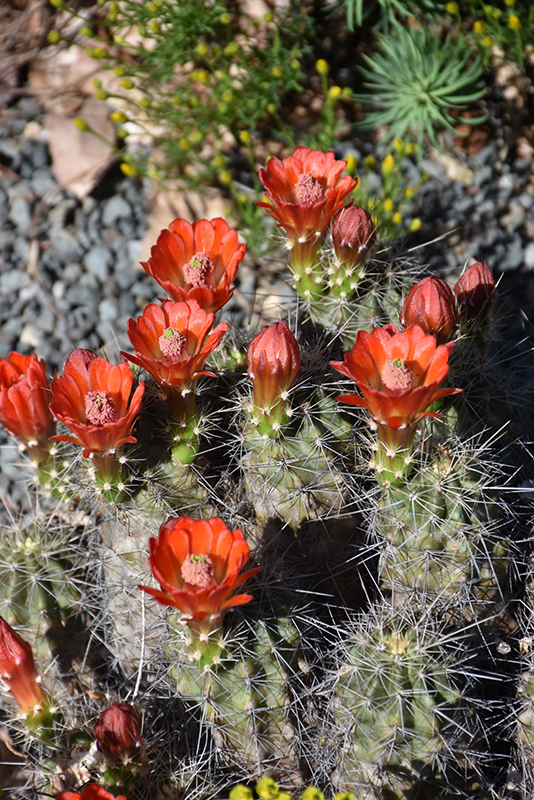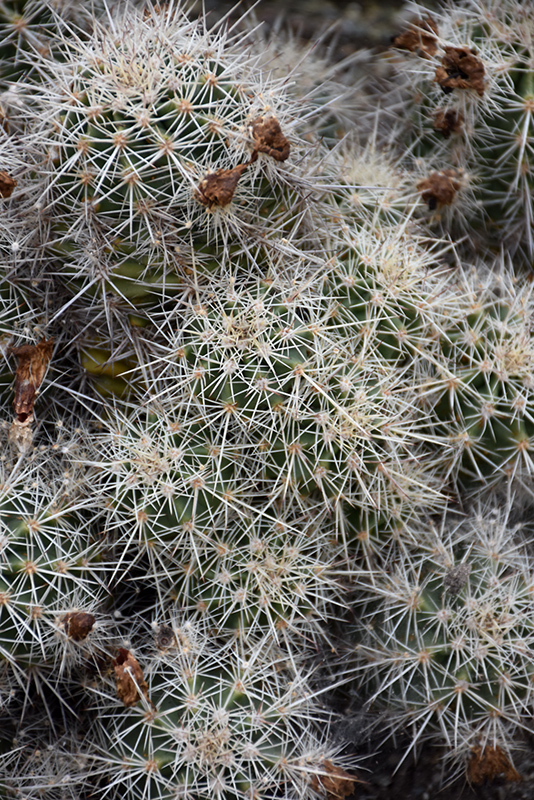Plant Finder
Height: 24 inches
Spread: 24 inches
Sunlight:
![]()
Hardiness Zone: 7b
Other Names: Scarlet Hedgehog Cactus
Description:
This cactus is widely cultivated for its beautiful flowers; rot prone in winter, needs good drainage; blooming begins as the plant matures in a few years; a wonderful addition to the rock garden
Ornamental Features
Mexican Claret Cup is a member of the cactus family, which are grown primarily for their characteristic shapes, their interesting features and textures, and their high tolerance for hot, dry growing environments. Like all cacti, it doesn't actually have leaves, but rather modified succulent stems that comprise the bulk of the plant, and which are designed to hold water for long periods of time. This particular cactus is valued for its rigidly upright and cylindrical habit of growth, and usually grows as a single spiny ribbed grayish green stem. This plant features solitary red cup-shaped flowers with orange overtones and creamy white eyes along the stems in late spring.
Landscape Attributes
Mexican Claret Cup is a succulent evergreen plant with a strongly upright, cylindrical form. It tends to grow as a solitary entity comprised of a single stem, and it doesn't usually spread laterally. As a type of cactus, it has no true foliage; the body of the plant is wholly comprised of a spiny grayish green stem which is prominently ribbed.
This is a relatively low maintenance plant, and should never be pruned except to remove any dieback, as it tends not to take pruning well. Deer don't particularly care for this plant and will usually leave it alone in favor of tastier treats. Gardeners should be aware of the following characteristic(s) that may warrant special consideration;
- Spiny
Mexican Claret Cup is recommended for the following landscape applications;
- Accent
- Rock/Alpine Gardens
- General Garden Use
Planting & Growing
Mexican Claret Cup will grow to be about 24 inches tall at maturity, with a spread of 24 inches. It is often grown as either a solitary specimen or in combination with other complementary plants as part of a garden composition. It grows at a slow rate, and under ideal conditions can be expected to live for 60 years or more.
This plant should only be grown in full sunlight. It prefers dry to average moisture levels with very well-drained soil, and will often die in standing water. It is considered to be drought-tolerant, and thus makes an ideal choice for a low-water garden or xeriscape application. Like most succulents and cacti, this plant prefers to grow in poor soils and should therefore never be fertilized. It is not particular as to soil pH, but grows best in sandy soils. It is highly tolerant of urban pollution and will even thrive in inner city environments. This species is native to parts of North America. It can be propagated by division.





